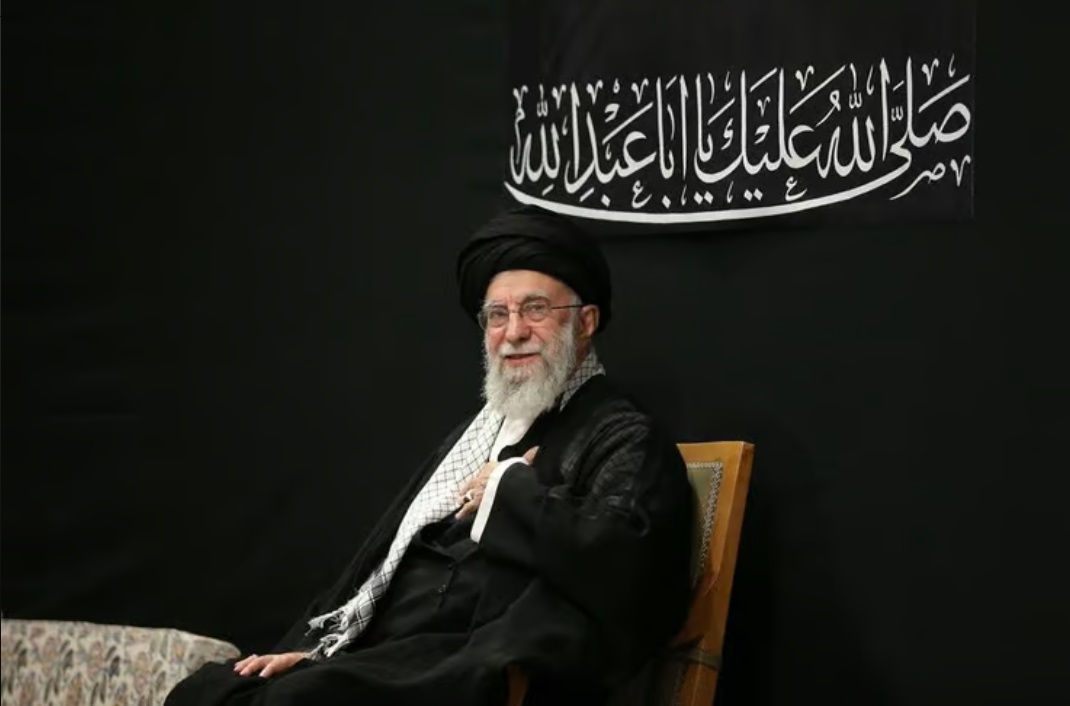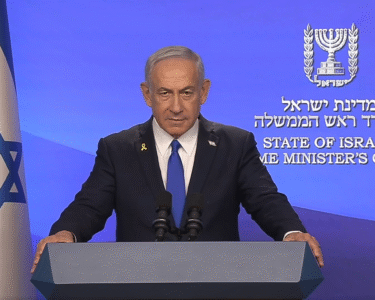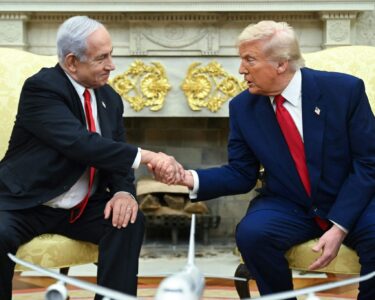Iran’s Supreme Leader Ali Khamenei made his first public appearance in three weeks at a Tehran event marking the night of Ashura, while new intelligence data revealed that Iranian missiles successfully struck at least five Israeli military facilities during the recent 12-day conflict between the two nations.
Khamenei, who had remained out of public view since Israel’s opening strike and avoided appearances even after the ceasefire announcement, participated in the religious commemoration in Tehran where he was greeted with chants of “hero” from attendees. The appearance marks his first public event since the outbreak of hostilities with Israel, during which reports emerged that Israel was considering targeting the Iranian leader for assassination.
Media coverage compiled indicates mounting concern within Iran that Israel may be seeking to assassinate Supreme Leader Ali Khamenei, leading to a substantial intensification of his security measures. In the wake of Iran’s failure to safeguard senior military commanders and key strategic assets during the recent confrontation with Israel, Khamenei had largely refrained from public appearances, limiting his engagement to occasional pre-recorded statements. Nonetheless, in a rare address last week, he proclaimed what he described as a “victory” and vowed that Tehran would “swiftly” repair the damage sustained by its nuclear infrastructure.
The Telegraph newspaper has reported that Iranian missiles directly struck at least five Israeli military installations during the fighting, citing radar data obtained by the publication. The newspaper noted that Israel has not officially reported these strikes and that they cannot be publicly disclosed within Israel due to strict military censorship regulations.
According to a map published on The Telegraph’s website, the targeted installations included Camp Tzipporit near Nazareth, Camp Galilot, and the Tel Nof Air Force base. The article did not specify whether these represent all facilities that sustained direct hits, noting that researchers from the University of Oregon plan to publish a more comprehensive analysis within two weeks.
The Telegraph reported that the radar data indicates five previously unreported military facilities were struck by six Iranian missiles across northern, southern, and central Israel, including a major air base, an intelligence collection center, and a logistics base. When approached for comment, an Israel Defense Forces spokesman declined to address the specific claims but stated that “all relevant units maintained operational continuity throughout the fighting”.
The strikes on military installations occurred in addition to 36 other missiles that penetrated Israel’s air defense systems and caused substantial damage to residential buildings and industrial infrastructure, according to The Telegraph. The newspaper observed that while most Iranian missiles were intercepted, Tehran’s accuracy rate improved as the conflict progressed, though experts describe the reasons for this improvement as “unclear”.
Potential explanations for the increased effectiveness include Israel’s conservation of ammunition due to limited stocks of interceptor missiles, as well as Iran’s adoption of improved firing tactics and deployment of more sophisticated missile systems. The Telegraph’s analysis indicates that approximately 16 percent of missiles breached the defense systems operated by Israel and the United States, a figure that aligns with previous IDF assessments that determined an 87 percent success rate for defensive interceptions. The missile attacks resulted in 29 fatalities.
Iranian sources have claimed that the primary method for overcoming defense systems involved the simultaneous deployment of drones and missiles. According to these sources, the combination of fast-moving missiles with slower drones forced defensive systems to divide their attention, with the drones serving primarily to “keep the systems busy”. Iranian officials added that while many drones were intercepted, they succeeded in creating confusion within Israeli defense networks.
The emergence of Khamenei from his extended period of seclusion comes as intelligence revelations challenge previous assessments of Iran’s military effectiveness during the conflict. The Supreme Leader’s public appearance suggests a calculated effort to project strength and continuity of leadership following a period of heightened security concerns.
The Telegraph’s reporting, based on independent radar data analysis, provides new insights into the scope and effectiveness of Iranian missile strikes during the 12-day conflict. The newspaper’s findings indicate that several direct hits on military installations went unreported in Israeli media, highlighting the challenges in assessing the full extent of damage and casualties during the hostilities.
The conflict’s conclusion has left both nations claiming victory while dealing with significant military and infrastructure damage. Iran’s ability to penetrate Israeli air defenses, as documented by The Telegraph’s analysis, demonstrates the evolving nature of missile warfare and the limitations of even advanced defensive systems when confronted with coordinated, multi-vector attacks.
The improved Iranian missile performance over the course of the conflict suggests adaptive tactics and potentially enhanced weapons systems, raising questions about the long-term implications for regional security. The simultaneous use of drones and missiles, as described by Iranian sources, represents a tactical innovation that proved effective against sophisticated air defense networks.
Khamenei’s return to public appearances, combined with his declarations of victory and promises to restore nuclear facilities, signals Iran’s intention to project resilience despite the extensive damage sustained during the conflict. The Supreme Leader’s three-week absence from public view had fueled speculation about his security situation and the regime’s stability during the crisis.
The University of Oregon’s forthcoming comprehensive analysis, expected within two weeks, may provide additional details about the extent and nature of Iranian missile strikes on Israeli military facilities. Such independent academic assessment could offer valuable insights into the effectiveness of both offensive and defensive capabilities demonstrated during the conflict.
The revelation of successful strikes on multiple Israeli military installations, previously unreported due to censorship restrictions, underscores the information warfare aspects of modern conflicts and the challenges in obtaining accurate, real-time assessments of military effectiveness and damage sustained by opposing forces.
Photo: AP





